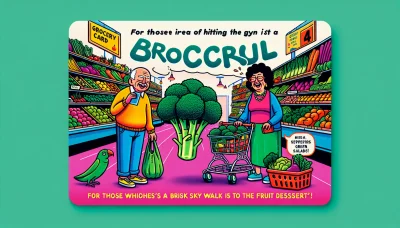Low carb high fiber foods Quiz
Test Your Knowledge
Question of
Understanding Low Carb High Fiber Diets
Benefits of Combining Low Carb and High Fiber
The fusion of low carb with high fiber is a dynamic combination that brings forth an array of health benefits. This powerful duo works together to enhance digestive health and optimize metabolic functions. By focusing on nutrient-dense, fibrous foods that are low in carbohydrates, individuals can experience a sustainable approach to health and wellness.
Embracing a diet rich in high-fiber foods while maintaining low carb intake can lead to significant improvements in weight management. Fiber contributes to a feeling of fullness, reducing the temptation to overeat. Moreover, this dietary approach supports long-term weight loss by promoting a healthier eating pattern that can be easily maintained.
Weight Management and Satiety
A low carb high fiber diet triumphs in the realm of weight management largely due to its impact on satiety. Foods high in fiber absorb water and expand in your stomach, making you feel full sooner and for longer periods. This natural appetite suppression facilitates lower calorie consumption without the battle against hunger pangs.
This dietary strategy is not just about shedding pounds; it's about reshaping your relationship with food. It encourages mindful eating practices and focuses on whole, unprocessed foods that nourish the body and regulate appetite hormones, leading to sustainable weight management without the need for constant calorie counting.
Blood Sugar Control and Heart Health
When it comes to blood sugar regulation, a low carb high fiber diet is exceptional. The reduced carbohydrate intake helps mitigate spikes in blood glucose levels post meals, while fiber slows down sugar absorption into the bloodstream. This synergistic effect is crucial for maintaining energy levels and preventing insulin resistance.
The heart also reaps benefits from this dietary pattern. High fiber intake has been linked to lower cholesterol levels and reduced risk of cardiovascular diseases. This diet promotes a healthy lipid profile by decreasing bad LDL cholesterol and increasing good HDL cholesterol, thereby safeguarding heart health.
Key Principles of a Low Carb High Fiber Diet
Macronutrient Ratios and Food Choices
The cornerstone of a successful low carb high fiber diet lies in understanding macronutrient ratios. This means prioritizing proteins and fats while selecting carbohydrates that are rich in fiber yet low on the glycemic index. Foods like leafy greens, nuts, seeds, and certain fruits make the cut for being both nutrient-rich and low in net carbs.
Choosing the right food is paramount; it's not merely about reducing carbs but selecting those that provide maximum nutritional value. Incorporating a variety of vegetables, lean proteins, healthy fats, along with specific fruits like berries ensures a well-rounded diet that supports overall health.
- Aim for non-starchy vegetables as they are high in fiber but low in carbs.
- Incorporate seeds like chia or flaxseeds for an extra fiber boost.
- Select fruits with care; berries are typically lower in carbs but rich in fiber.
- Include nuts for healthy fats while keeping an eye on portion sizes.
- Consider legumes such as lentils or chickpeas for plant-based protein and fiber.
- Stay hydrated as increased fiber intake requires more water consumption.
Planning Your Meals and Snacks
Meal planning is essential when adhering to a low carb high fiber diet. Structuring your meals around protein sources with ample vegetables ensures balanced nutrition while keeping carbs in check. Preparing snacks like vegetable sticks with hummus or Greek yogurt with nuts helps maintain energy levels throughout the day.
Consistency is key; having a set meal plan prevents impromptu decisions that might derail your dietary goals. It's also important to adjust portions based on individual needsactivity level, age, and gender play crucial roles in determining how much one should eat within this dietary framework.
Top Foods for a Low Carb High Fiber Diet
Vegetables: The Nutrient Powerhouses
When it comes to a low-carb, high-fiber diet, vegetables are your best friends. They are loaded with essential nutrients while being low in calories and carbohydrates. Vegetables like spinach, kale, and other leafy greens provide a significant amount of fiber without the carb overload. Incorporating a variety of colorful vegetables ensures you get a broad spectrum of vitamins and minerals.
Opting for non-starchy vegetables like bell peppers, cucumbers, and zucchini can help you maintain your low-carb goals. These veggies can be enjoyed raw, sauted, or roasted for maximum flavor. They are versatile ingredients that can be included in salads, soups, and stir-fries to enhance your meals nutritionally without adding extra carbs.
Leafy Greens and Their Impact
Leafy greens such as spinach, swiss chard, and lettuce are incredibly beneficial in a high-fiber diet. They contain high levels of vitamins A, C, K, and several B vitamins along with important minerals like iron and calcium. Leafy greens offer a substantial fiber boost with minimal impact on your carbohydrate intake.
Including leafy greens in your daily diet supports digestive health and contributes to feeling full longer due to their high fiber content. They can be easily added to smoothies, omelets, or as a base for hearty salads making them an ideal choice for those looking to increase their fiber intake while keeping carbs at bay.
Cruciferous Vegetables for Daily Meals
Cruciferous vegetables such as broccoli, cauliflower, Brussels sprouts, and cabbage are stars in the low-carb high-fiber arena. These vegetables are not only rich in fiber but also contain compounds that may offer protective effects against certain types of cancers. Their dense nutrient profile makes them an excellent addition to any meal plan.
Cauliflower has gained popularity as a low-carb alternative to grains and legumes; it can be riced or mashed as a substitute for higher-carb sides. Broccoli and Brussels sprouts roast beautifully for a caramelized flavor while retaining their fibrous benefits. Adding these veggies into regular rotation will bolster your diet with necessary fiber while keeping carbs under control.
Fruits: Selecting the Right Kinds
Fruits are often associated with high sugar content; however, certain fruits fit perfectly into a low-carb high-fiber diet. The key is selecting fruits that are lower in sugar yet high in dietary fiber. Fruits such as berries and avocados are prime examples that offer essential nutrients without disrupting your carb limits.
It's important to consume these fruits in moderation due to their natural sugars but they can still play an integral role in providing variety and sweetness to your diet. Incorporating the right kinds of fruits ensures you don't miss out on the antioxidants and other health benefits they offer.
Berries: A Sweet Source of Fiber
- Raspberries boast one of the highest fiber counts among fruits while being relatively low in carbs.
- Blackberries follow closely behind raspberries in terms of fiber content and offer notable levels of vitamins C and K.
- Strawberries have lower fiber compared to other berries but they're still a healthy choice with plenty of vitamin C.
- Blueberries are antioxidant powerhouses even though they have more carbs; they should be consumed mindfully within your carb budget.
Avocados: A Unique Fruit with Healthy Fats
Avocados stand out as one of the most keto-friendly fruits thanks to their high levels of monounsaturated fats which promote heart health. They're also remarkably high in fiber while maintaining low net carbs due to their minimal sugar content. Avocados contribute valuable potassium which is often lacking in low-carb diets.
This creamy fruit can be used in various ways from classic guacamole to smoothies or simply sliced up as a salad topping. Its versatility goes beyond just taste; avocados provide the much-needed dietary fiber that keeps your gut health on track while adhering to a low-carb lifestyle.
Incorporating Whole Grains and Seeds
Choosing Whole Grains Wisely
Introducing whole grains into your diet is a power move for your health! These nutrient-packed wonders are high in fiber, which aids in digestion and keeps you feeling full longer. Not only do they regulate blood sugar levels, but they also play a crucial role in preventing chronic diseases. When shopping for whole grains, look for words like "whole grain" or "whole wheat" to ensure you're getting the full benefits.
Ditch the refined grains and embrace the wholesomeness of brown rice, barley, and millet. These unrefined heroes maintain their nutritional integrity, offering vitamins, minerals, and antioxidants that refined grains lack. Making the switch is simple: start by substituting half the white rice or pasta with their whole-grain counterparts and gradually increase from there. Your body will thank you!
Quinoa and Its Versatile Uses
Quinoa is a game-changer in the world of whole grains! This gluten-free powerhouse packs complete proteins, containing all nine essential amino acids. It's as versatile as it is nutritious use it in salads, as a rice substitute, or even make quinoa porridge for breakfast. Its nutty flavor and fluffy texture can elevate any dish.
Cooking quinoa is a breeze just simmer one part quinoa to two parts water until it's soft and translucent. But don't stop there; quinoa can be popped like popcorn or flaked like oats to add a delightful crunch to your meals. It's truly a culinary chameleon that deserves a spot in your pantry.
The Role of Oats in a Low Carb Regimen
Oats are not just for breakfast; they're an all-star player in any low-carb diet. They boast beta-glucan, a type of soluble fiber that's been linked to improving cholesterol levels and boosting heart health. Plus, oats come with a low glycemic index, which means they won't spike your blood sugar levels.
Incorporating oats into your diet doesn't have to be boring think beyond oatmeal! Grind them into flour for baking, add them to smoothies for extra texture, or use them as a binder in veggie burgers. They offer versatility while keeping your carb intake in check.
The Importance of Seeds
Seeds may be small but they're mighty when it comes to nutrition! They're filled with healthy fats, proteins, fiber, vitamins, and minerals that can enhance any diet. By sprinkling seeds onto salads or blending them into smoothies, you seamlessly add extra nutrients to your meals without compromising taste.
Don't overlook seeds when planning your meals they're not just garnishes but integral ingredients that boost nutrition. From pumpkin seeds on top of yogurt to sesame seeds in stir-fries, these tiny treasures can transform your dishes both nutritionally and gastronomically.
Chia Seeds: A Superfood Staple
Chia seeds are the epitome of superfoods! Rich in omega-3 fatty acids, antioxidants, and fibers these little seeds have it all. They can absorb multiple times their weight in water which makes them perfect for creating puddings or thickening smoothies.
- Hydration: Soak chia seeds before adding them to recipes to utilize their water-retaining capabilities.
- Versatility: Use chia seeds to create healthier versions of jams or as egg substitutes in vegan baking.
- Nutrition Boost: Sprinkle chia seeds on oatmeal or salads for an instant upgrade in nutritional value.
- Energizing: Due to their high fiber content, chia seeds provide sustained energy release throughout the day.
Flaxseeds: Adding Omega-3s to Your Diet
If you're looking for an omega-3 boost without fishy business flaxseeds are your go-to! These tiny brown or golden seeds are loaded with alpha-linolenic acid (ALA), a plant-based omega-3 fatty acid that's essential for heart health. Ground flaxseeds unlock more nutritional benefits than whole ones as they're easier to digest.
Add ground flaxseeds to cereals or homemade bread for an effortless health kick. They also make great thickeners in soups or sauces while providing that much-needed fiber boost. With flaxseeds' subtle nutty flavor enhancing any dish's profile, they're an indispensable item on your grocery list!
Nuts and Legumes: A Balancing Act
Nuts: A Nutrient-Dense Snack Option
Nuts are powerhouses of nutrition, packed with healthy fats, protein, and fiber. They're an ideal snack for maintaining energy levels and supporting heart health. With a variety of options available, there's a nut out there for every palate.
Incorporating nuts into your diet can lead to better health outcomes. They are convenient, require no preparation, and are perfect for on-the-go snacking. Keep in mind that while nutrient-dense, they are also high in calories, so moderation is key.
Almonds and Their Health Benefits
Almonds stand out with their impressive profile of vitamin E, magnesium, and antioxidants. Regular consumption can aid in lowering cholesterol levels and reducing the risk of heart disease. They're also great for skin health due to their vitamin E content.
These versatile nuts can be enjoyed raw, roasted, or as almond butter. Including almonds in your diet can contribute to better blood sugar control and provide satiating dietary fiber to keep hunger at bay.
Pecans: A Flavorful Addition to Your Diet
Pecans are not only delicious but also beneficial for brain function due to their high levels of omega-3 fatty acids. These nutrients are essential for maintaining mental acuity and preventing cognitive decline.
The rich flavor profile of pecans makes them a popular ingredient in various dishes, enhancing both sweet and savory recipes. They offer a satisfying crunch and can elevate the nutritional value of any meal or snack.
Legumes: Selecting Low Carb Varieties
Legumes are a diverse group of plant foods that have a place even in low-carb diets when chosen carefully. They're an excellent source of plant-based protein and fiber, which can help stabilize blood sugar levels.
To incorporate legumes into a low-carb lifestyle, focus on portion control and select varieties that are lower on the glycemic index. This approach allows you to enjoy their benefits without compromising your dietary goals.
Black Beans and Their Versatility
Black beans are a staple in many cuisines around the world due to their versatility. They can easily be included in salads, soups, or as a main dish thanks to their hearty texture and rich flavor.
- Rich in antioxidants
- High in dietary fiber
- Excellent source of plant-based protein
- Versatile in recipes ranging from savory to sweet
- Affordable and widely available
- Easily stored as dried or canned for convenience
Lentils: A Protein-Rich Choice
Lentils are an affordable protein-rich food that can support muscle growth and repair. Their high fiber content promotes digestive health and may contribute to weight management efforts.
They cook faster than most legumes, making them a convenient option for quick meals. Lentils can be used in a variety of dishes from hearty stews to refreshing salads, demonstrating their adaptability in the kitchen.
Protein Sources in a Low Carb High Fiber Diet
Animal-Based Proteins
Fish: Combining Omega-3s with Fiber
Fish is an exceptional source of high-quality protein that's low in carbohydrates and rich in omega-3 fatty acids. Incorporating fish such as salmon, trout, and sardines into your diet can boost heart health alongside fiber intake. The inclusion of fish in a low carb, high fiber diet not only supports muscle growth but also aids in maintaining optimal body functions.
Fiber-rich sides like leafy greens or cruciferous vegetables can complement fish meals to enhance satiety and nutrient absorption. It's important to choose wild-caught fish when possible for the highest nutritional value and to avoid breaded or fried options that add unnecessary carbs.
Poultry: Lean Choices for Daily Meals
Poultry is another excellent animal-based protein that aligns well with a low carb, high fiber diet. Chicken and turkey breast are lean options that provide substantial protein without the extra fat or carbs. They're versatile and can be prepared in various ways to keep your meals interesting.
When incorporating poultry into your diet, it's crucial to consider the cooking method. Grilled, roasted, or baked poultry with herbs and spices offers maximum flavor without added carbs. Pairing poultry with fibrous vegetables or salads can create a balanced meal that satisfies dietary needs.
Plant-Based Proteins
Tofu: A Low Carb Protein Alternative
Tofu stands out as a stellar plant-based protein that fits perfectly into a low carb, high fiber diet. It's incredibly versatile and can take on various flavors depending on how it's prepared. Tofu is also an excellent source of calcium and iron, which are essential nutrients for overall health.
For those looking to increase their fiber intake while keeping carbs low, pairing tofu with fibrous vegetables like broccoli or Brussels sprouts can make for a nutrient-dense meal. Always opt for firm or extra-firm tofu to ensure a higher protein content and better texture when cooking.
Tempeh: Benefits Beyond Fiber
Tempeh is another nutritious plant-based protein that offers benefits beyond its fiber content. Made from fermented soybeans, tempeh has a unique texture and nutty flavor that enriches any dish. It's not only rich in protein but also prebiotics due to its fermentation process, which promotes gut health.
- Marinate Before Cooking: Enhance tempeh's flavor by marinating it before cooking; this also helps soften its texture.
- Saute for Texture: Sauting tempeh can give it a satisfyingly crispy exterior while maintaining a tender interior.
- Versatile Ingredient: Use tempeh as a meat substitute in recipes ranging from stir-fries to sandwiches for added dietary variety.
- Avoid Overcooking: To prevent tempeh from becoming too dry or tough, avoid overcooking it; keep an eye on cooking times.
- Balanced Meals: Combine tempeh with colorful vegetables and healthy fats like avocado to create well-rounded meals that are both filling and flavorful.
- Nutrient Boost: Look for fortified tempeh varieties that offer additional vitamins such as B12, especially important for those following vegan diets.
- Digestibility: Since tempeh is fermented, its generally more digestible than other soy products; this makes it an excellent choice for sensitive stomachs.
- Eco-Friendly Option: Tempeh is not only good for you but also better for the environment compared to some animal proteins; choosing tempeh supports sustainable eating habits.
Meal Planning and Preparation Tips
Creating Balanced Meals
Embarking on the journey of meal planning begins with understanding the art of creating balanced meals. It's about harmonizing flavors while ensuring nutritional adequacy. Aim for a rainbow on your plate; this isn't just visually appealing, but it guarantees a variety of vitamins and minerals. Don't forget to include a healthy mix of proteins, fats, and carbohydrates - your body's primary energy sources.
A balanced meal isn't only about what you eat, but also how much you eat. Controlling portions prevents overeating while ensuring you get just the right amount of energy. It's a cornerstone of healthy eating that can help maintain weight and improve overall well-being.
Portion Control and Macronutrient Distribution
When it comes to portion control, it's not just about reducing sizes; it's about understanding the right balance of macronutrients. Each meal should be a strategic mix of proteins, carbs, and fats to fuel your body optimally. Visual cues can be incredibly helpfulthink of your plate divided into sections for each macronutrient group.
Macronutrient distribution is key in sustaining energy levels throughout the day. Aiming for a consistent intake with each meal helps in regulating blood sugar levels, keeping hunger pangs at bay, and supporting muscle repair and growth.
Ingredient Swaps for Higher Fiber Content
Fiber is essential for digestive health, yet many diets fall short in this crucial component. Simple swaps can significantly boost fiber intake: think whole grains instead of refined ones, or legumes in place of some meat portions. These tweaks not only enhance fiber but also add texture and depth to meals.
Increasing fiber doesn't have to mean compromising taste. Incorporating more fruits, vegetables, nuts, and seeds into your dishes adds both flavor and crunch. They're small changes with big impacts on satiety and digestion!
Recipe Ideas and Cooking Techniques
Diving into recipe creation can be as exciting as it is nourishing! Start by exploring different cuisines for inspirationeach has its unique set of staple ingredients and spices that can transform your usual fare into something extraordinary. Remember to adapt recipes to suit your dietary needs without sacrificing flavor.
Cooking techniques are just as important as the ingredients themselves when it comes to healthful eating. Mastering various methods can lead to more enjoyable meals that support your wellness goals.
Slow-Cooking for Flavor and Convenience
Slow-cooking is a game-changer for busy folks seeking wholesome meals. This method allows flavors to meld beautifully over several hours, resulting in tender, savory dishes with minimal effort. Plus, slow cookers are perfect for batch cookingprepare once, eat all week!
- Plan Ahead: Gather all ingredients in advance to streamline the cooking process.
- Moderate Seasoning: Spices intensify over long cooking periods; start with lessyou can always add more later.
- Bulk It Up: Add legumes or root vegetables to extend servings without diluting flavor.
- Layer Ingredients: Place tougher cuts of meat at the bottom where they're closest to the heat source.
- Avoid Overfilling: Keep slow cookers no more than two-thirds full to ensure even cooking.
- Clean As You Go: Save time by cleaning prep tools while ingredients cook away.
- Savor Leftovers: Many slow-cooked meals taste even better the next day after flavors have had time to settle.
Stir-Frying for Quick, Nutritious Meals
If you're looking for speed without skimping on nutrition, stir-frying is your ally. This technique cooks food rapidly at high heat ensuring vegetables retain their crunch and color while meats become perfectly seared yet moist inside. It's an excellent way to whip up a nutritious meal in minutes!
To master stir-frying, keep everything ready before you turn on the heat: chop veggies uniformly for even cooking; measure out sauces; cut meat into thin strips for quick searing. A hot wok or pan is crucialingredients should sizzle as soon as they hit the surface!
Understanding the Role of Supplements
Supplements can be powerful allies in your quest for health and vitality. They fill nutritional gaps in your diet, ensuring you get the necessary vitamins and minerals. However, it's crucial to approach supplementation with a strategic mindset, recognizing that they're supplements, not substitutes for healthy eating.
When used correctly, supplements can enhance physical performance, improve cognitive function, and support overall well-being. It's essential to select high-quality products from reputable sources and to consult with healthcare professionals to tailor supplementation to your individual needs.
Fiber Supplements: When to Consider Them
Fiber supplements are a fantastic tool when dietary fiber intake is low or digestive health needs a boost. They can regulate digestion, support heart health, and help maintain blood sugar levels. Consider them if you're struggling to consume enough fiber-rich foods like fruits, vegetables, and whole grains.
Remember that fiber supplements are most effective when taken with plenty of water. Start with a small dose to allow your body to adjust and avoid potential discomfort such as bloating or gas.
Psyllium Husk: A Popular Fiber Supplement
Psyllium husk stands out as a top choice among fiber supplements due to its versatility and effectiveness. It's derived from the seeds of the Plantago ovata plant and is renowned for its ability to absorb water, which helps create a sense of fullness and promotes regular bowel movements.
This supplement is beneficial for those on low-carb diets who may be missing out on fiber from traditional sources. Psyllium husk can also aid in cholesterol management when combined with a diet low in saturated fat.
Prebiotic Fibers for Gut Health
Prebiotic fibers are specialized dietary fibers that nourish the friendly bacteria in your gut. These substances are found naturally in many foods but can be supplemented to support gut health further.
They play a critical role in maintaining a balanced gut microbiome, which is linked to numerous aspects of health including immune function and mental wellness. If you're looking to give your digestive health an extra edge, prebiotic fibers might be worth adding to your regimen.
Balancing Supplements with Whole Foods
The synergy between whole foods and supplements is undeniable. While supplements can bolster nutrient intake, whole foods provide a complex matrix of nutrients along with dietary fiber, antioxidants, and phytochemicals that supplements alone cannot offer.
To achieve optimal health outcomes, focus on a nutrient-dense diet first before considering supplementation. This approach ensures that you reap the benefits of both whole foods and supplements in harmony.
Integrating Supplements into Your Diet
- Consult Healthcare Providers: Always discuss new supplements with healthcare professionals to ensure they complement your diet and health goals.
- Quality Over Quantity: Choose high-quality supplements with transparent sourcing and minimal additives.
- Tailored Approach: Personalize your supplement regimen based on individual dietary restrictions and nutritional needs.
- Mindful Timing: Take supplements at optimal times; some are best absorbed with food while others should be taken on an empty stomach.
- Avoid Duplication: Check multivitamins for overlap with standalone supplements to prevent excessive intake of certain nutrients.
- Moderation is Key: More isn't always betterexcessive consumption of certain vitamins or minerals can lead to adverse effects.
- Track Your Intake: Monitor how supplements affect your body over time and adjust accordingly.
- Educate Yourself: Stay informed about the latest research regarding dietary supplements and their benefits or risks.
Potential Interactions and Considerations
Navigating the world of supplements requires awareness of potential interactions with prescription medications or other supplements. Certain combinations can lead to reduced efficacy or even adverse reactions.
In addition to interactions, consider any underlying health conditions that might influence how your body responds to specific supplements. For instance, individuals with kidney disease may need to avoid certain minerals that their bodies cannot process effectively.
Staying Motivated on Your Dietary Journey
Setting Realistic Goals and Tracking Progress
Embarking on a dietary journey can be exhilarating, but the true key to success lies in setting achievable goals. Realistic objectives act as stepping stones, leading you towards your ultimate target. They provide clarity, direction, and a sense of achievement that fuels further progress.
Tracking your progress is not just important; it's essential! It's the compass that guides you through your dietary quest. By keeping a close eye on your achievements, you can adjust your course as needed, ensuring that each step taken is a step closer to where you want to be.
Short-Term Milestones for Long-Term Success
Short-term milestones are the secret weapon in your dietary arsenal. They break down the daunting task of major lifestyle changes into manageable chunks. Celebrating these small victories not only boosts morale but also reinforces your commitment to the long-term goal.
Think of these milestones as mini-celebrations on your journey. They're not just markers of progress but opportunities for reflection and recalibration. Each one achieved is a testament to your dedication and hard work.
Tools and Apps for Monitoring Intake
In this digital age, technology is your ally in monitoring dietary intake. There are countless apps designed to log meals, count calories and offer nutritional insights. These tools make tracking effortless and integrate seamlessly into daily life.
Leveraging these apps can transform how you approach your diet. They serve as both a diary and a mentor, providing valuable feedback that helps you stay on track with your goals.
Overcoming Common Challenges
The path to dietary success is paved with challenges, but overcoming them is part of what makes the journey so rewarding. Recognizing common obstacles allows you to prepare strategies in advance to deal with them effectively.
Persistence and adaptability are vital when facing dietary hurdles. With every challenge conquered, you'll find yourself stronger and more committed to your cause.
Dealing with Cravings and Social Settings
- Identify Triggers: Understand what sparks your cravings to better manage them.
- Healthy Alternatives: Keep nutritious snacks within reach to satisfy urges without derailing your diet.
- Social Strategies: When dining out or attending events, plan ahead by checking menus or eating beforehand.
- Mindful Eating: Focus on savoring each bite which can reduce overindulgence and enhance satisfaction.
- Support System: Surround yourself with friends who support your dietary choices and encourage positive habits.
Adjusting to Lifestyle Changes and Maintaining Variety
A dietary journey isn't just about changing what you eat; it's about transforming how you live. Embracing new habits may require reshaping daily routines or rethinking long-held beliefs about food.
The spice of life is variety, especially when it comes to food! Keeping a diverse palette ensures that meals remain exciting and nutritionally balanced. This diversity helps prevent boredom and keeps motivation high on your dietary journey.












